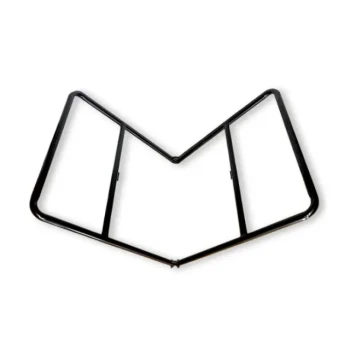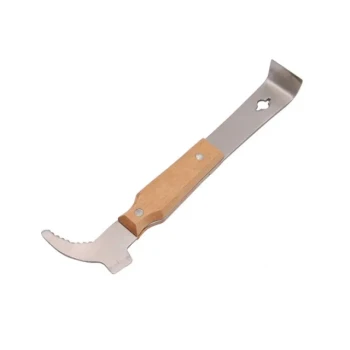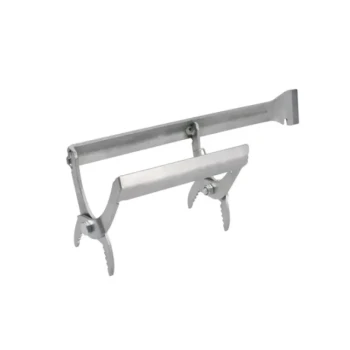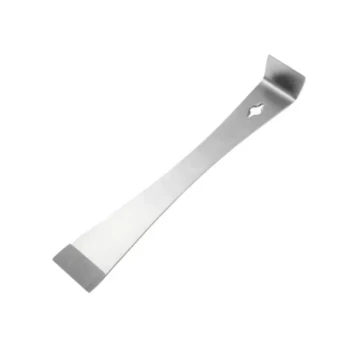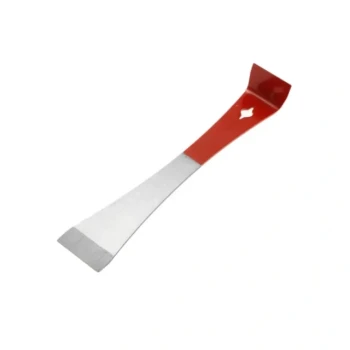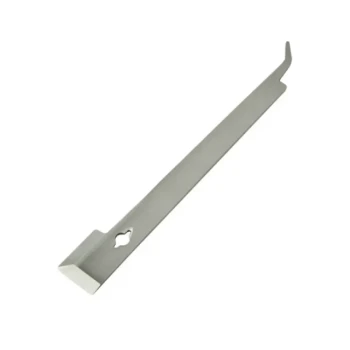As a general rule, you should place a beehive at least 10-15 feet away from your house, especially from high-traffic areas like doors and patios. While the bees only require a clear 6-foot "runway" in front of their entrance, giving them more space is crucial for minimizing unwanted interactions and ensuring easy access for hive maintenance.
The ideal distance isn't a single magic number, but rather a function of understanding the bees' flight path. The true goal is to direct their "bee highway" up and away from human activity, creating a safe and peaceful environment for both you and the hive.
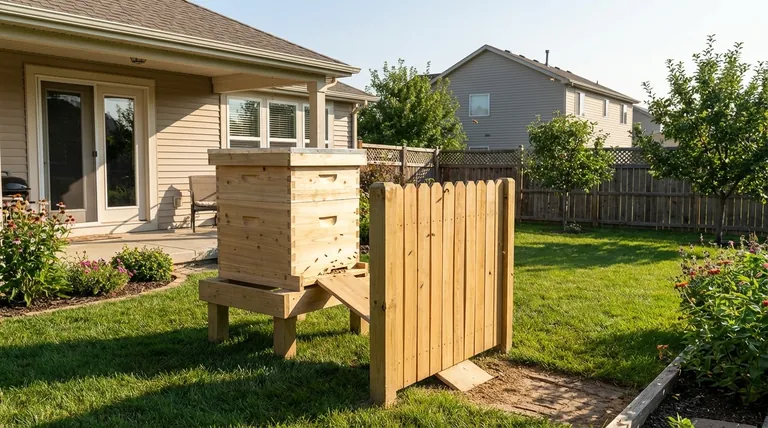
Understanding the Bee Flight Path
The single most important concept for hive placement is the flight path. Bees don't meander randomly; they operate with incredible efficiency, creating a direct route to and from the hive entrance.
The 'Bee Highway'
Think of the space directly in front of the hive entrance as an airport runway. For the first 6 to 10 feet, this is a high-traffic zone where thousands of bees will be taking off and landing.
This area must be kept clear of any regular human or pet activity. Placing a hive where this runway crosses a walkway or points directly at a neighbor's yard is a primary cause of conflict.
Using Barriers to Your Advantage
You can strategically use a barrier, like a solid fence, a wall, or a dense hedge, to manage this flight path.
If you place a barrier about 6 feet in front of the hive, bees will exit and immediately fly upwards to clear it. This effectively raises their highway above head height, making the area beyond the barrier much safer for normal activity. This technique allows for successful beekeeping even in smaller, more urban yards.
Key Factors Beyond Simple Distance
Choosing the right spot involves more than just the flight path. You must also consider practical access for yourself and the environmental needs of the colony.
Your Own Safety and Access
You will need to work the hive from the sides and, most importantly, the rear. Placing a hive directly against a wall or fence is a critical mistake.
Ensure you have at least 3-5 feet of clear working space on the sides and back of the hive. This gives you room to move, set down equipment, and inspect the colony without standing directly in the main flight path.
Proximity to High-Traffic Zones
Be mindful of areas where people congregate. Keep hives a significant distance away from:
- Patios, decks, and pools
- Children's play areas
- Main doorways and garden sheds
- Property lines, especially near a neighbor's outdoor living space
Environmental Needs: Sun and Wind
For a healthy colony, placement matters. The ideal location gets morning sun, which encourages the bees to start foraging earlier in the day.
It should also be protected from strong, prevailing winds, which can chill the hive in winter and make it difficult for bees to land. Placing the hive on the south or east side of a building or tree line is often ideal.
Understanding the Trade-offs and Pitfalls
Many new beekeepers make simple placement mistakes that can be difficult to correct once a 100-pound hive is established.
The Myth of "Flush Against a Wall"
The idea that a hive's back or sides can be placed against a structure is highly impractical. It prevents you from performing essential hive inspections and management tasks.
Furthermore, it can restrict airflow, potentially leading to moisture problems inside the hive, and may create a haven for pests like ants or mice between the hive and the wall.
Forgetting Your Neighbors
Before you even buy your bees, check your local ordinances regarding beekeeping setbacks and property line requirements.
Even if it's legally permitted, being a good neighbor is paramount. Talk to them about your plans, explain the benefits of bees, and assure them you will manage the hive responsibly. Placing the hive so the entrance faces away from their property is a simple act of courtesy.
Making the Right Choice for Your Property
Use these principles to assess your potential hive locations. There is no single perfect spot, only the best compromise for your specific environment.
- If your primary focus is maximum safety: Choose a location as far as possible from all human activity and use a 6-foot-tall fence or hedge to force the bee's flight path skyward immediately.
- If your space is very limited (a small suburban yard): Prioritize using a barrier. A hive can be placed relatively close (10-15 feet) to a house if a tall, solid fence directs its flight path safely up and over any paths or patios.
- If your main goal is optimal bee health: Find the spot that offers the best protection from wind and receives direct morning sunlight, then adapt the surrounding area to ensure safety and access.
Thoughtful placement is the foundation of successful, low-stress beekeeping.
Summary Table:
| Key Placement Factor | Recommendation | Why It's Important |
|---|---|---|
| Minimum Distance from House | 10-15 feet | Minimizes bee-human interactions near high-traffic areas. |
| Clear 'Runway' in Front of Hive | 6-10 feet | Essential space for bees to take off and land efficiently. |
| Beekeeper's Working Space | 3-5 feet on sides/rear | Allows for safe hive inspections and management. |
| Barrier for Flight Path Management | Solid fence/hedge 6 ft tall | Redirects bee traffic upwards, enhancing safety in small spaces. |
| Ideal Sun Exposure | Morning sun | Encourages early foraging for a healthier, more productive colony. |
Ready to Start Your Beekeeping Journey with Confidence?
Proper hive placement is just the beginning. Equip your apiary with the reliable, high-quality supplies needed for success. HONESTBEE is your trusted wholesale partner, supplying commercial apiaries and beekeeping equipment distributors with everything from durable hives and protective gear to essential tools.
Partner with us to access:
- Durable Equipment: Built to withstand the elements and support thriving colonies.
- Wholesale Efficiency: Streamline your operations with our distributor-focused service.
- Expert Support: Benefit from our industry knowledge to make informed purchasing decisions.
Let's build a productive partnership. Contact our team today to discuss your supply needs and request a wholesale catalog!
Visual Guide

Related Products
- Langstroth Bee Hives Bee Keeping Box for Beginners Beekeeping
- Ergonomic Two Person Foldable Hive Lifter
- Multi-Functional Sliding Hive Entrance for Beekeeping
- HONESTBEE Professional Long Handled Hive Tool with Precision Cutting Blade
- Long Langstroth Style Horizontal Top Bar Hive for Wholesale
People Also Ask
- Should a beginner try a different type of hive? Start with a Langstroth for a solid foundation.
- What are the key features of the Langstroth beehive? A Guide to the Standard for Modern Beekeeping
- What is the best type of bee hive for beginners? Start with the Proven Langstroth Standard
- How does the ease of access differ between 8-frame and 10-frame hives? Choose the Right Hive for Your Body
- Why were wooden hives traditionally preferred? For Natural Beekeeping Aligned with Bee Biology

